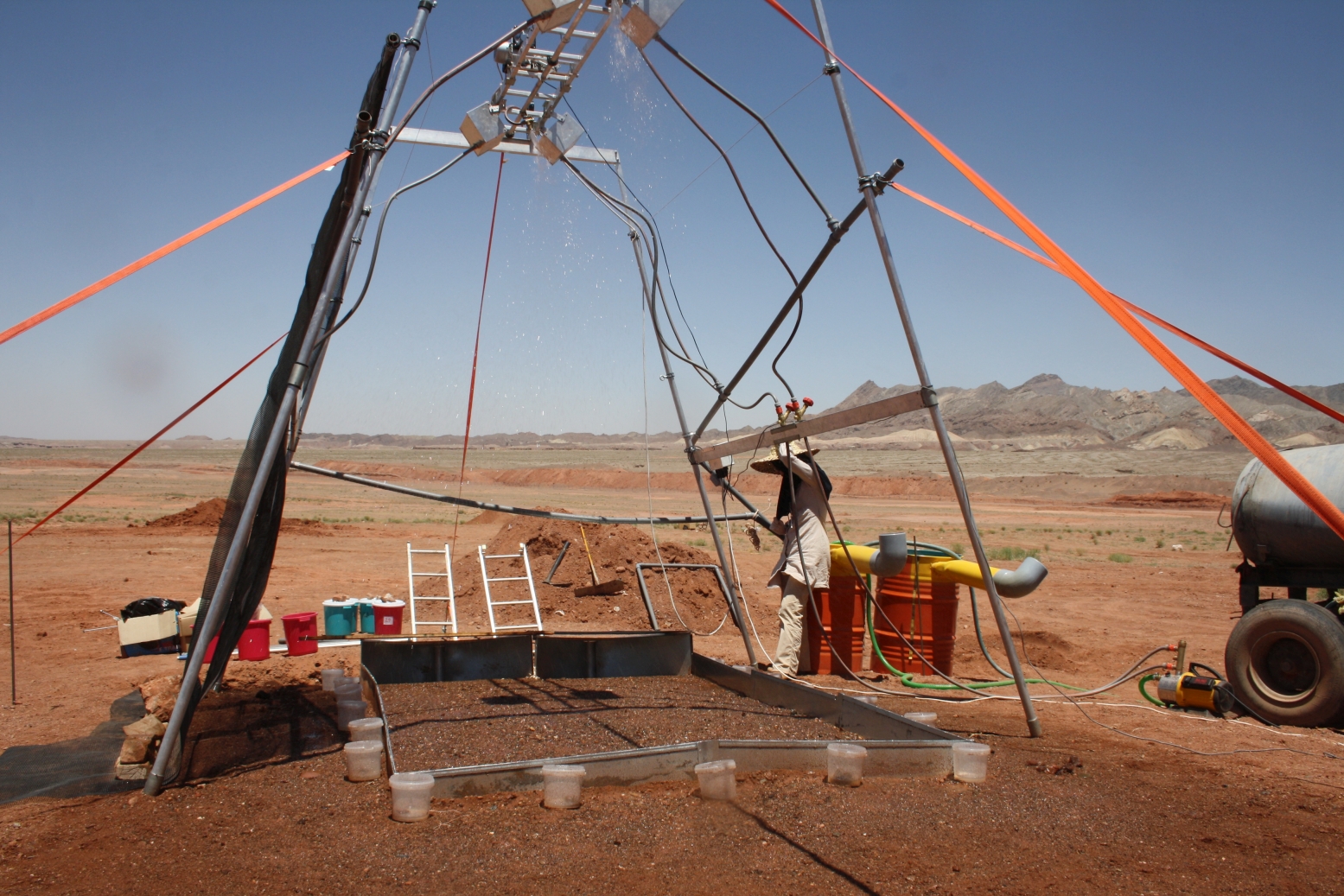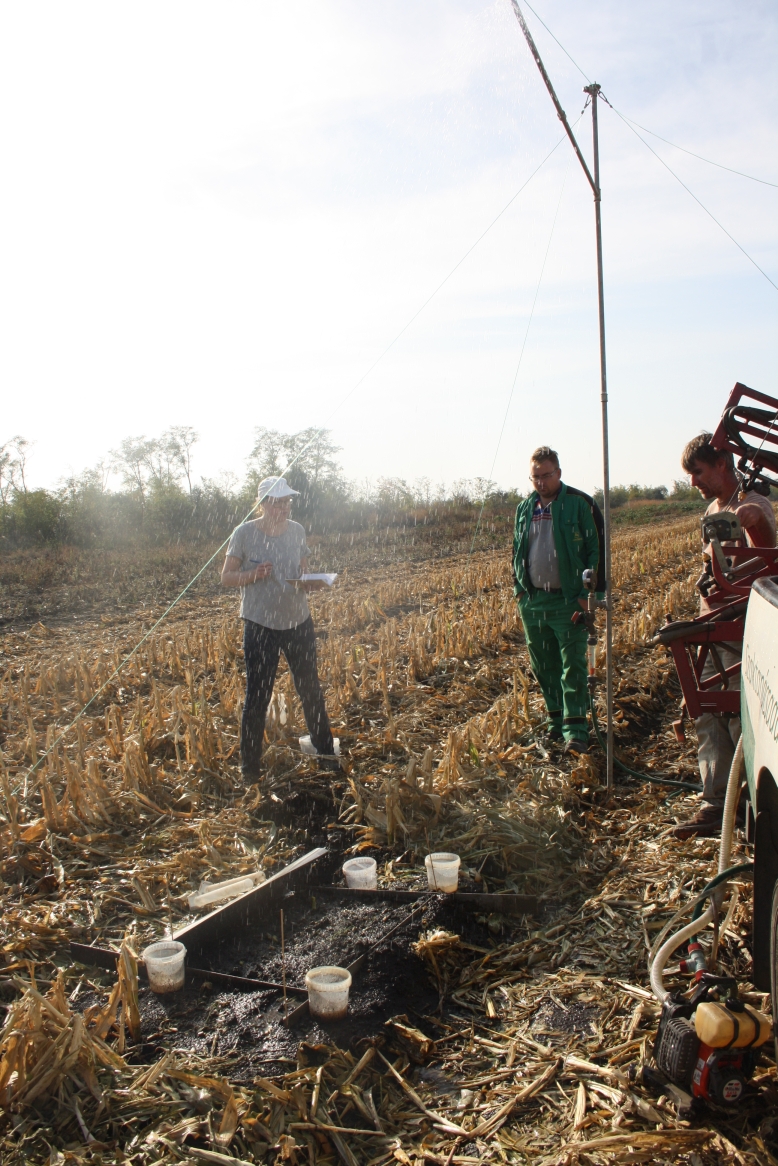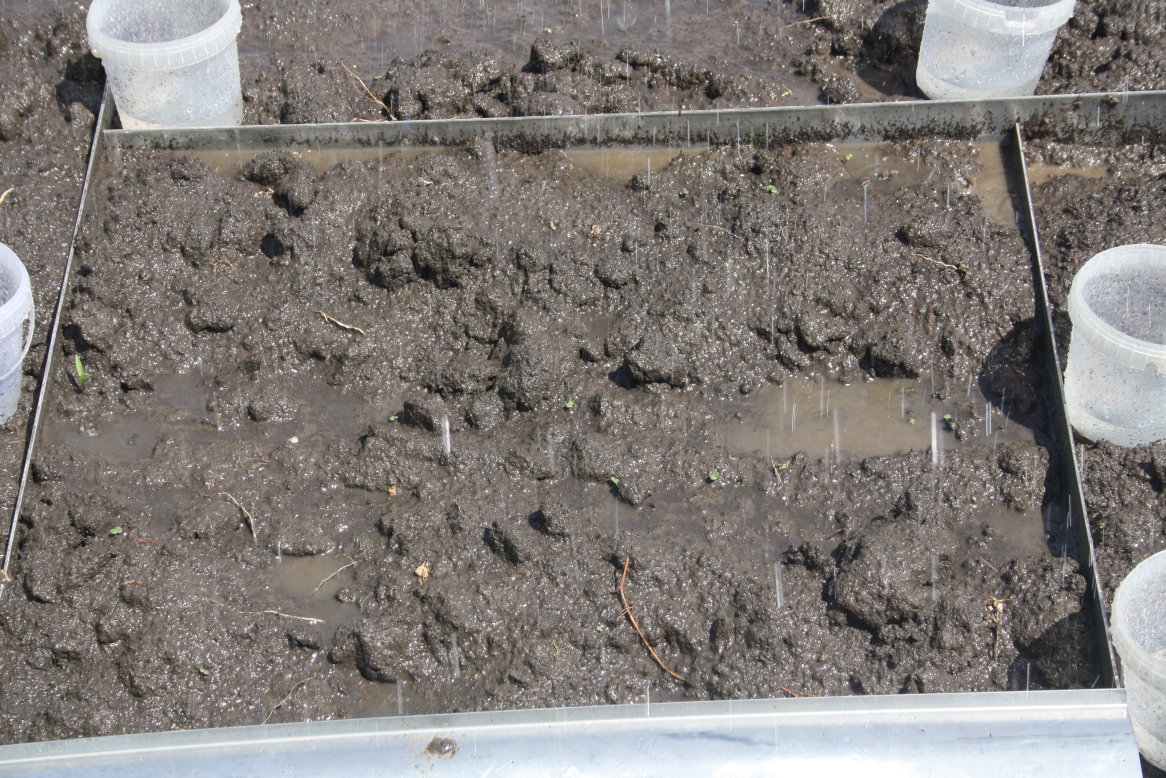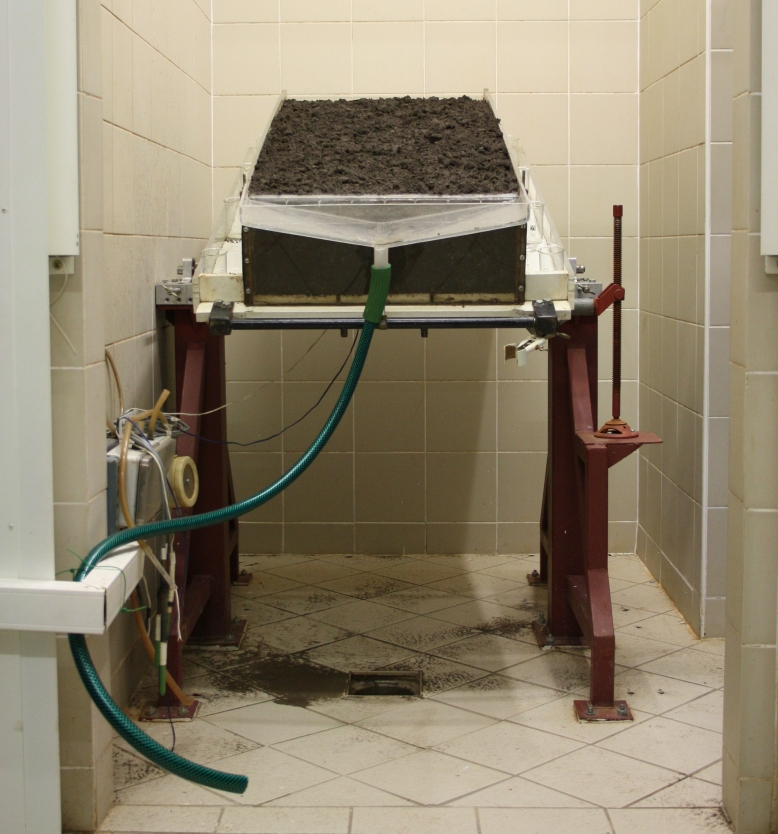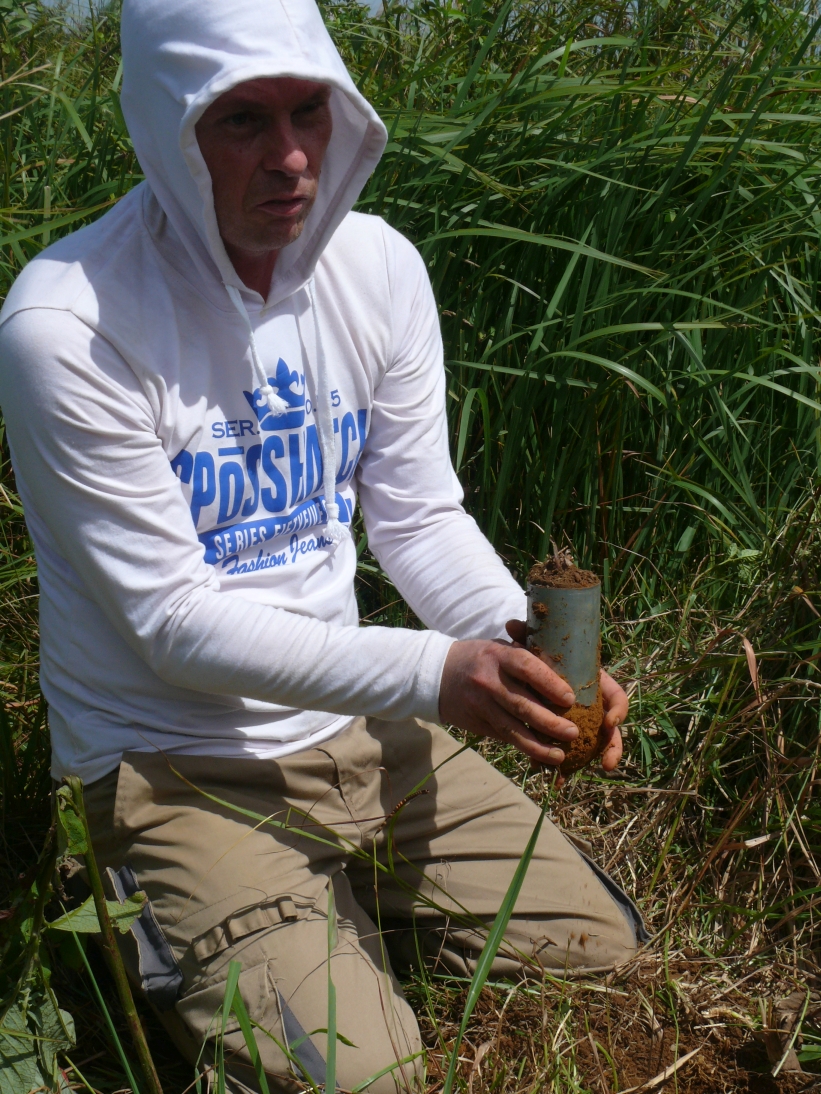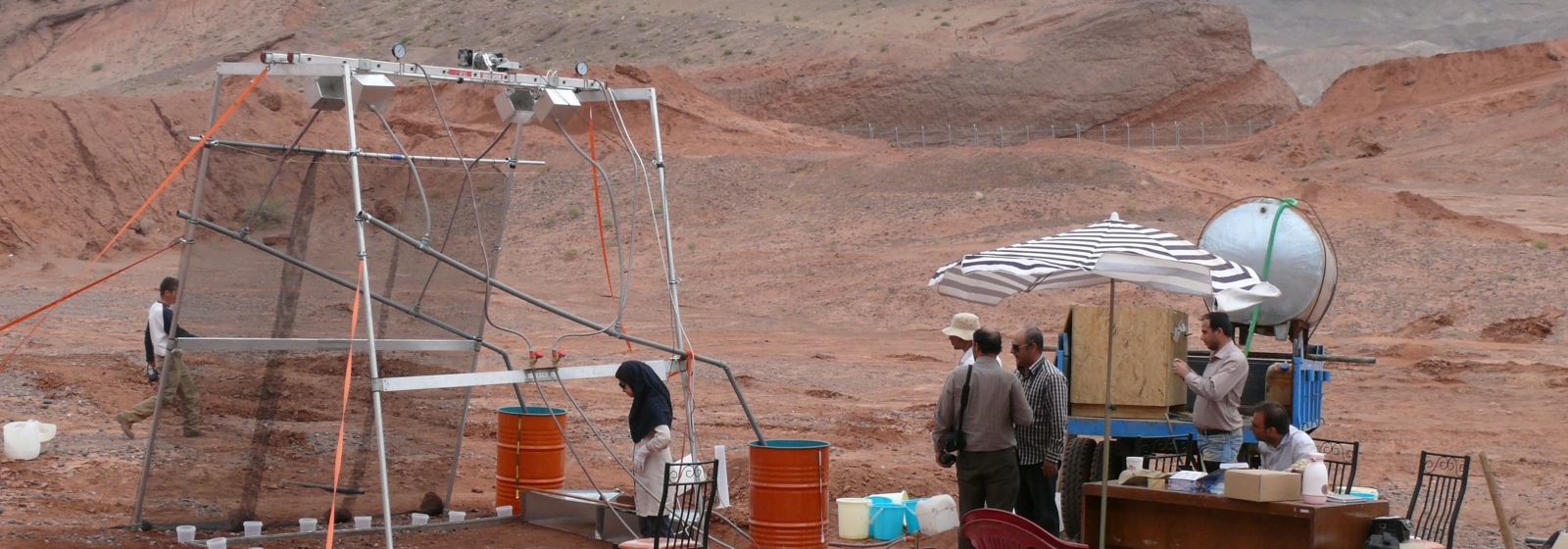
Laboratory for Sediment and Soil Analysis (SEDILAB) HUN-REN Research Centre for Astronomy and Earth Sciences, Geographical Institute
SOIL PHYSICS MEASUREMENTS AND RAINFALL SIMULATOR LABORATORY
Soil physical measurements and rainfall simulator research were started in the first half of the 2000s in the LSSA. From the soil physical measurements, the determination of porosity, porosity content and bulk density are based on the method developed by Ferenc Vér. The density results from this method are controlled by pycnometer measurements. In addition to the soil physical measurements, hygroscopicity tests are also available. The water absorption and water permeation dynamics of the monoliths can also be measured by the function which fitted to the results and estimates the saturated water permeation.
The rainfall simulator experiments started with a Pannon R-02 field rainfall simulator developed at the Soil Science Department of the Georgikon University, Keszthely (recent name: Pannon University, Georgikon Faculty). The EU Life SOWAP project of the Geographical Institute’s Physical Geography Department provided new opportunities for rainfall simulator research. Within the framework of this project, a field rainfall simulator developed by the researchers of the KU Leuven was purchased.
In the 2010s, within the framework of cooperation with the ELTE LSA, a laboratory rainfall simulator was installed in the ELTE Lágymányosi Campus. This equipment is still unique in Central Europe due to the 9 m drop forming height. The equipment is under continuous improvement. Currently, the control device and the drop-forming system are under renovation.
In 2013, within the framework of an awarded tender from the International Atomic Energy Agency (IAEA) and the support of the CSFK Director-General Framework, a portable large-field rainfall simulator was developed by our group. One of the rainfall simulators was delivered to the Radioactive Waste Management Agency of the Atomic Energy Organization of Iran (IRWA). Depending on the emerging needs, all three types of rainfall simulators can be used for rainfall simulator research.
Laboratory measurements
- Density determination by pycnometer
- Porosity and saturated hydraulic conductivity determination by undisturbed soil samples
- Hygroscopicity test: Mitscherlich- and Kuron's hygroscopicity
Portable rainfall simulator (SP02 rainfall simulator, 2014)
- Drop formation: Veejet 80/100 spray nozzles
- Nozzle height: 3 m
- Pressure: 0.4 bar
- Target area: 6 m2
- Precipitation parameters: (10 mm h-1 < i < 100 mm h-1)
- Control: a computer-controlled, continuously variable intensity
Tested parameters: moisture dynamics, runoff dynamics, sediment charge, runoff chemical parameters (pH, EC, DOC and nitrogen content), sediment parameters (particle composition, pH, SOC and nutrient content). Thin section analysis of soil compaction and crust formation; changes in surface roughness, micro-morphological changes detection by image processing.
Portable rainfall simulator (by the KU Leuven, 2004)
- Drop formation: Fulljet 1/2 HH-40 WSQ spray nozzles
- Nozzle height: 2.5 m
- Target area: 0.25 m2
- Precipitation parameters: 50 mm h-1 < i < 80 mm h-1
- Control: manual
Laboratory rainfall simulator (ELTE LSA and CSFK cooperation, 2012)
- Drop formation: unique drop formation (i < 10 mm h-1) and Fulljet 1/2 HH-40 WSQ spray nozzles (10 mm h-1 < i < 100 mm h-1)
- Drop formation height: 9 m
- Target area: 0.5 m2
- Precipitation parameters: adjustable intensity
- Monolith tilt: 0-45°
Tested parameters: runoff, infiltration, sediment charge, water chemistry parameters of moisture run-off/infiltration (EC, pH, DOC, macronutrients), sediment quality (particle composition, SOC, macronutrients). In contaminated soils, analysis of the spreading of pollutants and leaching-entrapment of fertilisers and pesticides. Thin section analysis of soil compaction and crust formation; changes in surface roughness, micro-morphological changes detection by image processing.

